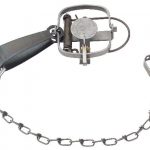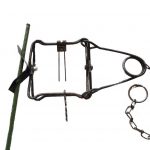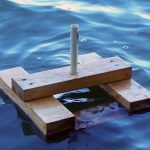The largest rodent found in North America is also the animal that started the North American fur trade. Countless entrepreneurs have made and lost fortunes on it’s pelt throughout history. Native Americans knew it for it’s warm fur and meat.
Today the beaver has lost some of it’s luster but still remains a staple furbearer in some parts of the country. In Nebraska, we have the added advantage of trapping them an extra month compared to some of the other furbearers. The equipment used and the methods of take vary as widely as the pursuers of this classic animal. We will take a look at what it takes to trap beaver in Nebraska.
Being considerably larger than the muskrat, beaver trapping equipment is proportionally larger, bulkier and more expensive. Yet some of your existing equipment can be used for beaver trapping. A number 3 coil spring or long spring trap can be utilized in some sets. A better choice would be a #4 or larger, since beaver have extremely large back feet. If you go the body grip route for beaver, the 330 conibear is the best body grip to use.
The sets you make for beaver can also vary widely. A couple of my favorites are the castor mound and “dam break” set. The castor mound set involves digging up some mud and plopping it on the bank
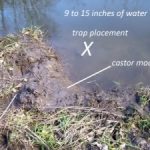
of a creek, pond or river. On this mound, place a dab of castor based beaver lure. Beavers make castor mounds to mark their territory and your mound will signal them that an intruder is in the area. The beaver will naturally attempt to put more mud on your mound, and top it with his own castor, showing you he’s the boss. Be prepared for him by placing a trap (or two) where you suspect he will come out of the water.
The dam break set capitalizes on the beaver’s ingenuity and dam building skills. Use your shovel, a stick, or your foot to break away part of the beaver dam and place a trap near this break. The beaver will be caught in the process of attempting to rebuild what you have broken. This also doubles as a good way to determine if there are still beaver in the area. Be cautious of where you place your trap or you may find after the the beaver has finished it’s repair job, your trap has become part of the dam!
Bob Miers of Sandy’s Fur Buying gives the following advice on beaver sets: “Spring is a time they travel as the young are kicked out and made to move on so to speak.
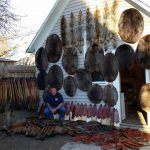
Even if you have little or no sign in your area on a river or creek, make a few scent mound sets and you will probably catch any passing beaver. I give an area 5 days and move on no matter how many I catch. I use scent mounds the most, some blind sets, and if there is a dam I use the broken dam set, and runs and trails what some guys call slides.”
Getting around with all this heavy equipment can be another challenge. Dave Hastings, Fur Takers Of America College Instructor, overcomes this challenge by using a boat. “I use a 6.5 horse Mud Buddy motor on my 12′ narrow John boat. I almost never get a “boat ramp” to launch or pick up, so the small motor makes it possible to drag it, or remove the motor and carry to launch most anywhere.
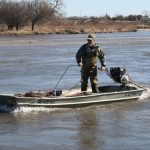
If there is snow, I can generally drag the unloaded boat down to the water by hand, and in the pull out, I have strung rope and chain for a long ways, using the bumper hitch to drag the boat up to a “loadabale” point. Before that, I ran a 17′ aluminum canoe. It was more pleasing, but I found I had to skin on the river when the catch is good, because of the weight and maneuverability issues of the canoe, and heavy beaver.” Dave also offers the following advice on spring beaver sets: “Beaver interest in castor lure is very high at this time. Generally I select active set locations (feed piles, bank den/lodge combinations, etc.) but I generally set the downstream end of most
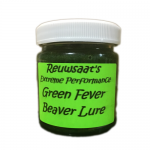
good sized islands, even without sign. Dispersing 2 and 3 year olds are out looking for other beaver, and the point at the bottom of an island for beaver is like the fire hydrant at the park for dogs. I almost always make at least two, sometimes 4 sets if I stop. I try to use a
castor based lure on one, and a food based lure (no castor) on the other. For the first two catches, it won’t matter, but I think beaver can get wise to a particular smell.”

Some other points to remember on beaver trapping pertain to equipment. One way sliding drowner cables should be used whenever possible. Anything heavy can be used as a weight at the end. To cut down on carrying weight, bring empty feed sacks and fill them with rocks and gravel at the set site. Empty feed sacks can be had for cheap at most feed stores. If you use 330’s, remember that Nebraska law states that body gripping traps with a jaw spread over 8″ must be placed under water. Also make sure you obtain permission on any private land and water. In Nebraska, if a river runs through the property, you must obtain permission from the landowner. You must also have landowner permission to trap under bridges that are in the county road right-of-way. (This can vary by county in Nebraska, check with your local game warden if in doubt).
Once you have caught your beaver, you can skin them yourself or
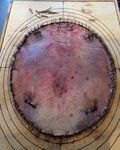
take them to a fur buyer whole. There are many useful parts on a beaver other than the fur. The meat, oil sacks, and castor glands have value to lure makers. The tails do as well, and the tails can also be skinned and processed like leather. Many people also eat the meat, saying it is akin to venison.
Last but not least, is the aspect of safety. Being on a river this time (or any time) of year can be hazardous. Dave Hastings has the following advice on safety: “If you are just starting out, you will need to experiment to see how long a line you should put in. Being on a shallow river after dark, when it is cold, is a very dangerous activity (don’t ask how I know, or how many times that lesson was taught…). Carry “dry bags” for extra clothes, flashlights, and first aid. Buy a cell phone waterproof kit/bag. (Cabelas, even Walmart.) A wet phone is immediately useless. And bear in mind that you likely will often be out of cell service. Be sure someone knows generally where you are and generally when you should be back. Don’t kid yourself. You may only be a few miles from a road or farmhouse, but if a catastrophe occurs, you might as well be on the moon. Consider, plan–think through decisions with safety in mind. Bad cuts, hypothermia, injuries, other health issues–all can be deadly.”
Don’t put those traps away just because spring is starting! We still have some time left. Get out there and enjoy what we have to offer in Nebraska.
-Mark Hajny, NFH member. Bob Miers is the NFH Secretary and owner of Sandy’s Fur Buying of Seward, Nebraska. Dave Hastings is an avid trapper, the editor of the Furtaker, (official magazine of the FTA) and instructs at the Furtaker’s College in the fall.

